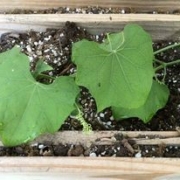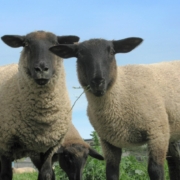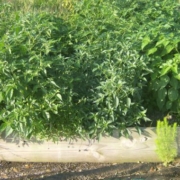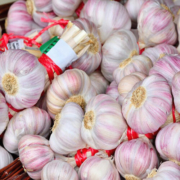Adventures in Mirliton
 Print This Post
Print This Post
By Justin Duncan, NCAT Agriculture Specialist
Every once in a while, something happens that lifts you from the humdrum mundanity of life. More rarely, these things coalesce out of the ether and settle down and snuggle in the lap of your mind like a kitten demanding affection. It all started with an ATTRA case and a group of growers who felt neglected.
I won’t get into the particulars of that case because there are so many more interesting things to focus on with mirliton, a seemingly forgotten plant in the eyes of U.S. academia.
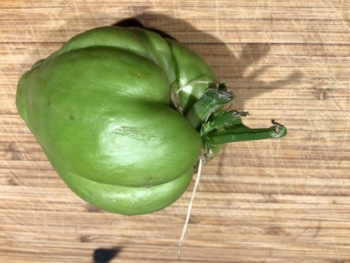
A sprouting store-bought chayote. Photo: Justin Duncan, NCAT
I have seen chayote in the grocery stores, and I admittedly wasn’t curious about it, beyond looking up the name and seeing that it’s a squash. That information was catalogued and saved away for a future time when it was needed. Years later, enter the mirliton—a Louisiana-adapted, Sechium edule that, much like crawfish, has a whole southern Louisiana culinary tradition surrounding it. The people who eat it swear by it, and the people that grow it have names for their strains like White Ishrael Thibodeaux and Papa Sylvest, Bogalusa White, and Remondet-Perque. From a plant breeding perspective, it was the traits, variability, and the similarity of another crop’s challenges that I have previously worked on while at Prairie View A&M University that got me hooked.
Both mirliton and chayote are the same species, but mirliton growers would like to keep their heirloom varieties pure for several reasons. First is heritage. Folks have been growing these plants for many years in southern Louisiana and are quite partial to their forebearers’ legacy. They also worry that foreign born Sechium will bring Chayote Mosaic Virus, which is a valid concern and should worry growers of watermelon, cantaloupes, luffa, and likely but not confirmed, bitter melons.
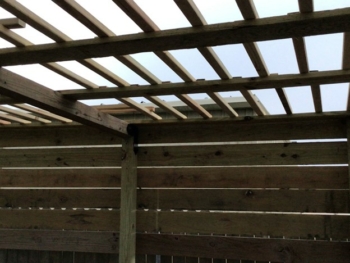
Trellis made from new and reclaimed lumber. Photo: Justin Duncan, NCAT
Mirliton is a type of squash. However, saying “it’s a type of squash” is an over-simplification that demands disambiguation. It’s a type of squash that must be properly trellised. It’s a type of squash that only has one seed. It’s a type of squash that must be planted in its entirety, to grow the next generation. It’s a type of squash that is perennial. It’s a type of squash whose massive root (chinchayote or guisquil) is edible like a potato. It’s a squash whose leaves and tender shoots are also edible, as greens. It’s a type of squash whose fruit will start sprouting and growing while still attached to the vine. It’s a squash that USDA tried to popularize in the early part of the last century but failed.
Yes, they failed but that was then, this is now, and maybe it’s the time for people to try again. Food prices are going up and this crop is a triple threat with leaves, roots, and fruit all being useful. For me, the attraction centers on this being new ground for me. The challenge of it all, my INTJ brain is exploding with the possibilities and the systems involved in making those possibilities a reality.
One of those systems, in the more physical sense of the word, is the trellis. Mirliton.org, led by Dr. Lance Hill, offers extensive knowledge about how to grow mirliton in a downloadable growing guide, including information on trellising styles. I built mine of a mix of new lumber for the uprights and reclaimed lumber for the lattice. After watching a multitude of videos on YouTube, including one about Alvin Orgeron, the man I received plants from, I’ve seen that trellis systems are at the user’s discretion as to the materials they are built from.
My adventures in Mirliton are just beginning. Let’s see where they take me.
Related ATTRA Resource:
This publication is produced by the National Center for Appropriate Technology through the ATTRA Sustainable Agriculture program, under a cooperative agreement with USDA Rural Development. ATTRA.NCAT.ORG.

